July/August 2023
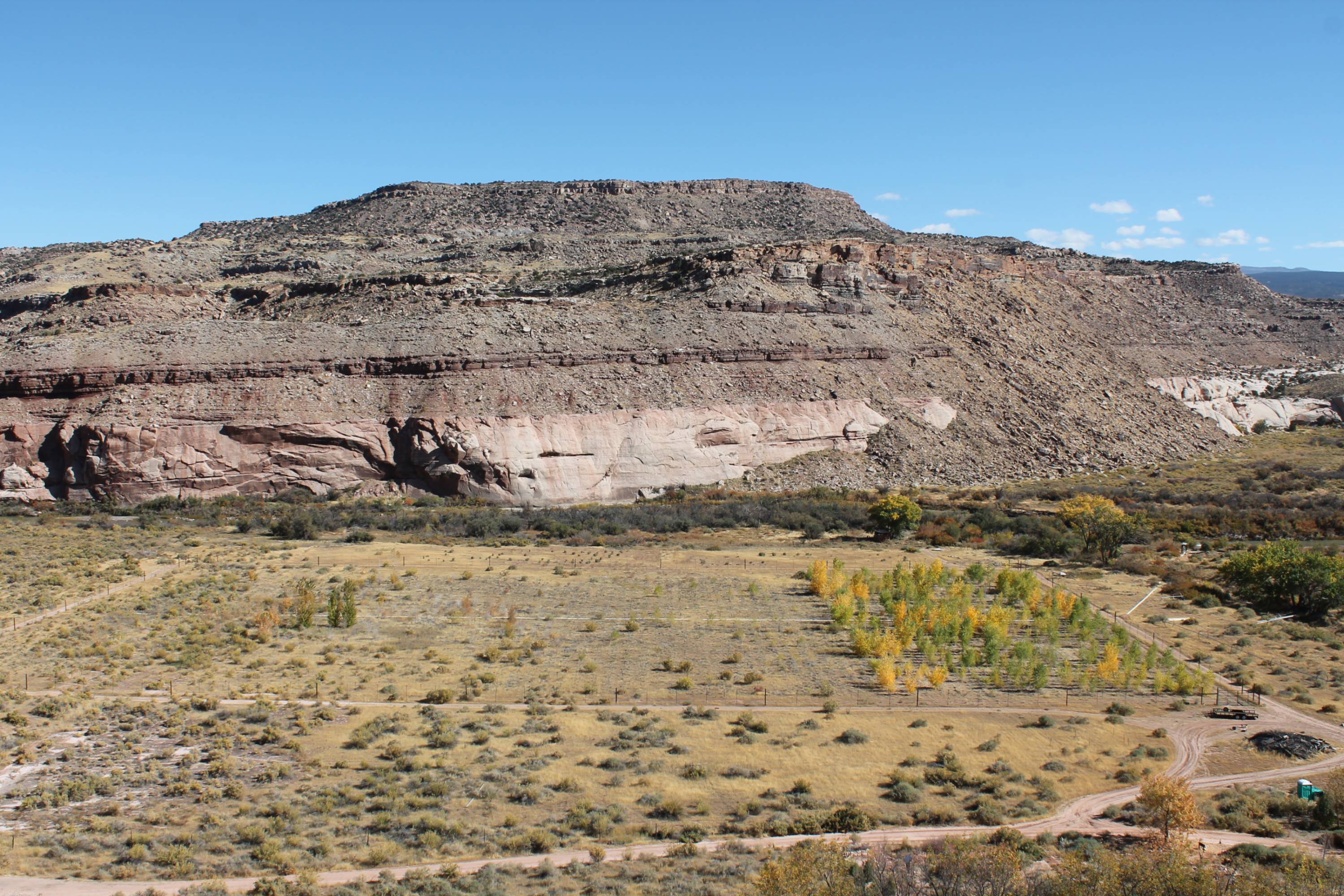 Common research garden
Common research garden
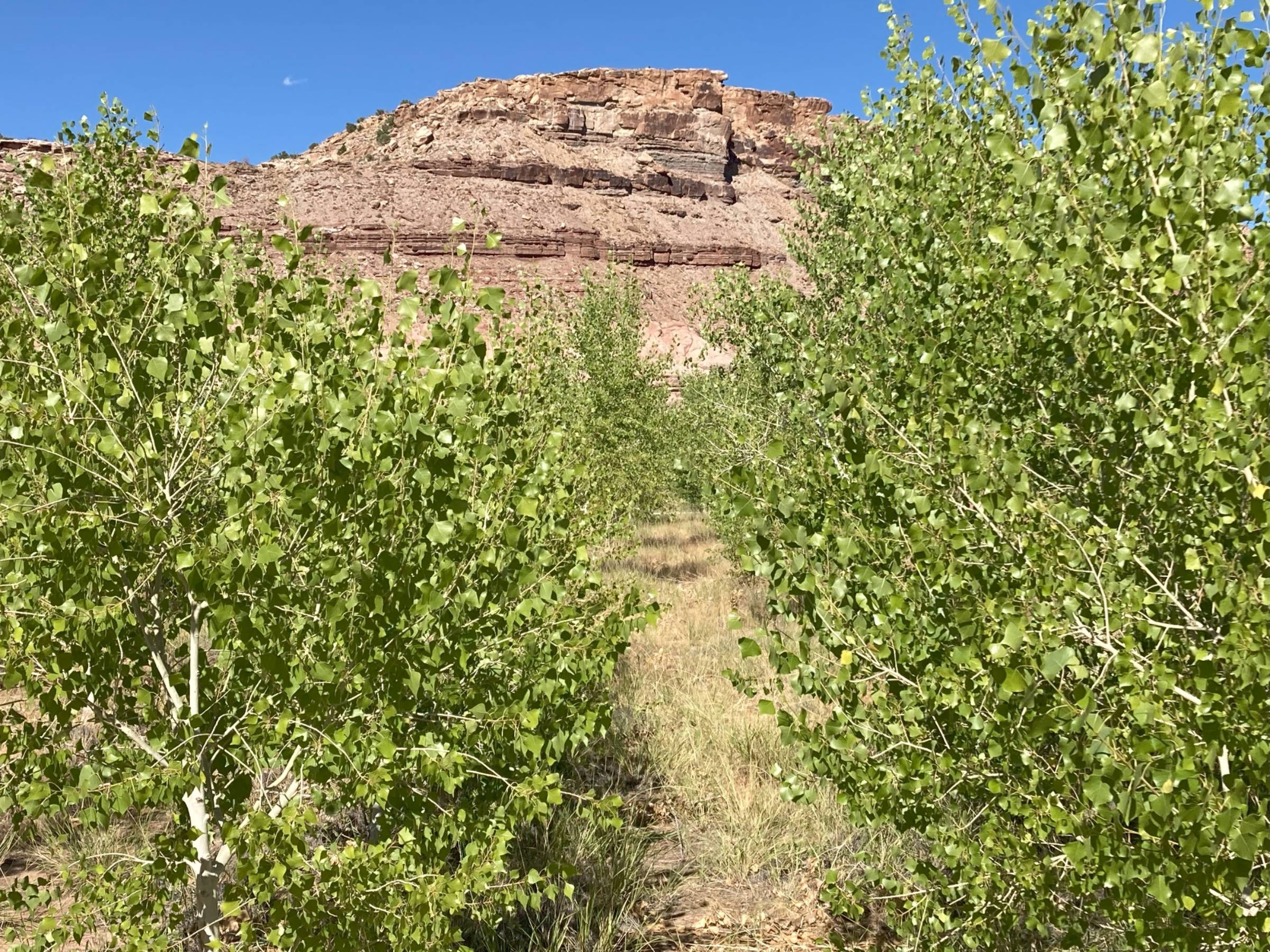 Cottonwood gallery
Cottonwood gallery
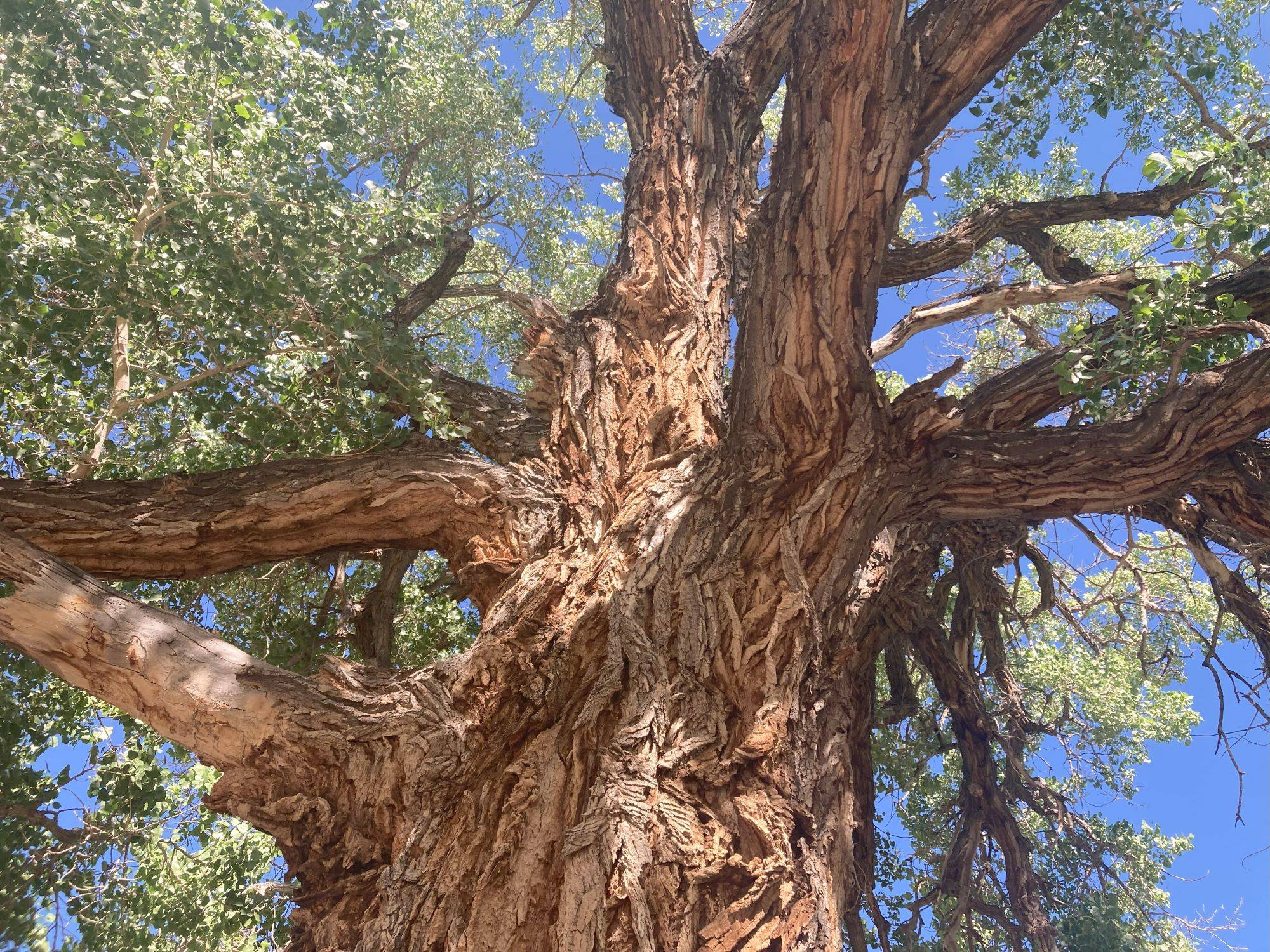 Cottonwood tree canopy
Cottonwood tree canopy
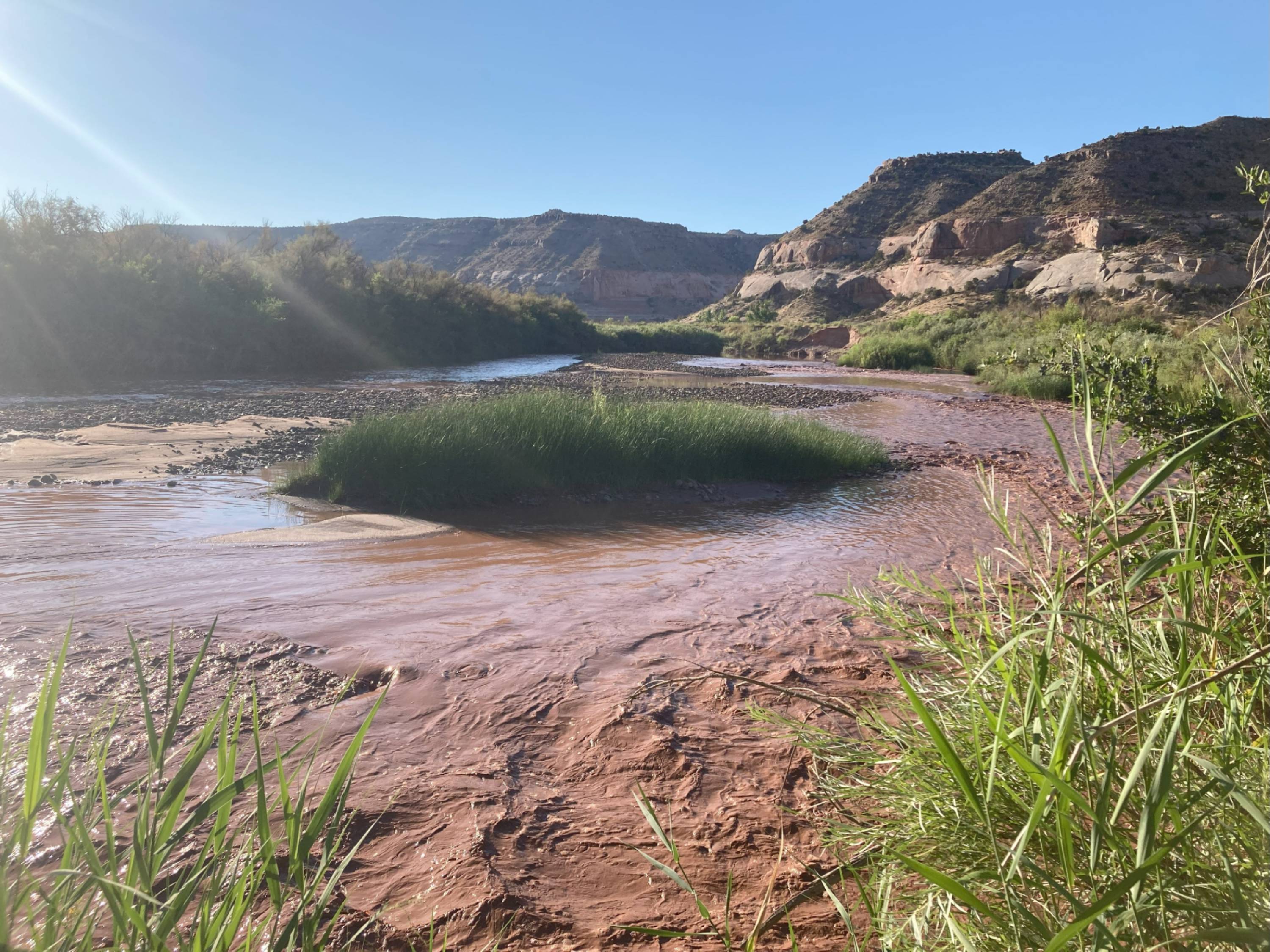 Dolores River storm runoff
Dolores River storm runoff
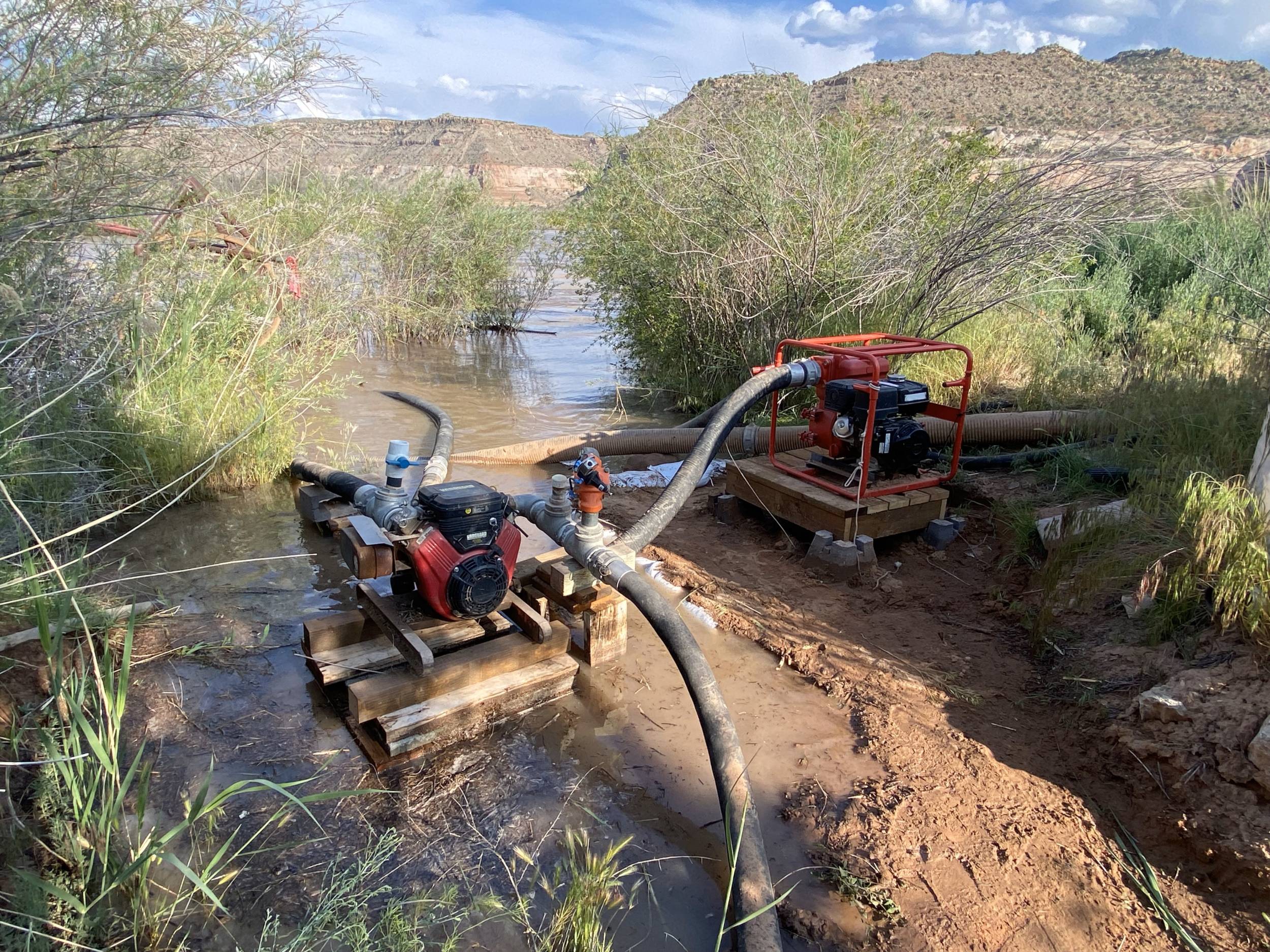 Irrigation pumps during spring 2023 flooding.
Irrigation pumps during spring 2023 flooding.
July 2023 was the hottest month in our planet’s recorded history, reaching global temperatures last seen around 120,000 years ago, when Neanderthals still walked the Earth. While record-setting heat waves struck communities in China and Southern Europe, here in the American Southwest, we experienced long strings of triple-digit days. At Bonderman Field Station, our temperature gauge indicated that daytime highs exceeded 100°F for 23 days in July, averaging 102°F. With the arrival of the monsoons in August, the weather let up a little, but not a lot: temperatures dropped five degrees. The heat, coupled with the occasional spitting spell in July and less than half an inch of rainfall in August, created harsh conditions for life at the field station.
If the staff here sweated uncomfortably through the height of summer, we could only imagine what it felt like to be a tree–unable to escape into a cool enclave during the hottest parts of the day. In the summer months, we spend most of our time trying to keep trees alive in the station’s gardens. These fields are important for research and educational purposes, but we also value them for their tree canopy. Canopy helps mitigate climate extremes, providing shade that shields plant and animal life from solar radiation, while reducing soil temperature and evaporation rates. The result is a cool enclave, a more hospitable microclimate, for all kinds of desert species.
Many of the trees and shrubs living in the bottomlands along the Dolores River or in the scrub of neighboring box canyons don’t need much help from us; their drought-tolerant tactics are remarkably creative and effective. But others, like the young trees in the native demonstration garden, the fruit trees in the orchard, and the riparian trees in the common research garden, are more susceptible to dehydration and death during extended periods of drought.
Every week, field station staff fire up two irrigation pumps. One pump feeds Dolores River water to our native garden, west-end ditches, and fruit orchard. The other, more mechanically fickle, pump delivers water to a common research garden of willows, boxelders, and cottonwood trees. During the summer, each field needs watering twice a week, a task that requires several hours of work, which can easily balloon if there are leaks in the system or a pump is down. Cumulatively, irrigation is a full-time job–and the common garden, which holds hundreds of individuals, demands the most of our time.
The experimental common garden at Bonderman Field Station was developed in 2014 by a group of researchers from Northern Arizona University, the Desert Botanical Garden in Phoenix, and the Colorado Plateau Native Plant Program. The project aimed to address the impacts of climate change on riparian vegetation, while improving restoration practices in the desert Southwest. To that end, researchers selected four major riparian plant species for study: Boxelder maple (Acer negundo), narrowleaf cottonwood (Populus angustifolia, a higher-elevation species), Fremont cottonwood (P. fremontii, a lower-elevation species), and Goodding’s willow (Salix gooddingii). As dominant tree species in the arid and semi-arid biomes of the American Southwest, these trees play a disproportionate role in the health of river corridors: above ground, their vegetation provides crucial habit, forage, and canopy for countless other aquatic and land-dwelling organisms; below ground, their roots stabilize stream banks, prevent river channelization, and filter sediments and pollutants from waterways. Such species are key to maintaining our region’s increasingly diminished riparian corridors, which must grapple not only with climate change, but a history of agricultural development, damming, and invasive species.
In common garden experiments, researchers plant individuals of a species from different geographic areas into a common field. Such experiments allow ecologists to study genetic variation within a species, helping them assess the adaptive potential of genetic traits from distinct populations under the same climatic conditions. Often, common garden experiments involve reciprocal gardens at different sites, allowing researchers to study the same genotypes in a range of environmental contexts. For the common garden at Rio Mesa, researchers collected cuttings of each tree species under study, including 4 replicate clones of 16 genotypes taken from 16 populations across the Southwest, spanning a broad climatic gradient. After establishing the cuttings at a nursery at Northern Arizona University, researchers planted them in a previously cultivated field on the west end of the field station, which they outfitted with a new pump, irrigation lines, and fencing. Once complete, the field contained ~4,000 trees, or ~1,000 individuals each of Boxelder maple, Goodding’s willow, Fremont cottonwood, and Narrowleaf cottonwood. Reciprocal gardens were also designed for development in Yuma, AZ (lower-elevation site) and Flagstaff, AZ (higher-elevation site) to compare species’ responses at the limits of their ranges.
Data gathered from common garden studies can inform forward-looking environmental restoration strategies, helping project managers select for plants with genetic traits that are well-adapted to both current and projected climatic conditions. When ecologists selected species for the common garden experiment at Rio Mesa, they focused on foundation riparian plants that would aid ongoing efforts to convert invasive monocultures of Russian knapweed and tamarisk into native communities with the capacity to support a greater diversity of life in a hotter and drier future. Researchers also took care to select dioecious species—trees that require both male and female plants for reproduction. Current research suggests that a changing climate may favor male plants over female plants, thereby decreasing recruitment and genetic diversity among local populations. To study the relationship between sex and survivorship in willows, cottonwoods, and boxelders, researchers planted equal numbers of males and females for each species under study, and colloquially named the field the “sex garden.” Once established, the sex garden at Rio Mesa aimed to address both gender and genetics in the complex constellation of factors that impact the success of native revegetation projects in the desert Southwest.
While in concept common garden experiments are relatively straightforward, in practice they require a lot of hard work, technical expertise, and troubleshooting. Gardens in general need considerable care: weeding, watering, pruning, mulching, and landscaping. In the desert, watering is often the most challenging part of that equation. The Dolores River, from which we draw our irrigation water, is typical of many rivers in the desert Southwest. The river’s flow is highly variable and often filled with sediments that tax pump engines and clog irrigation lines. At times, the river runs so low the pump has barely enough water to run; at other times, there’s too much water, and it floods our equipment. After a storm, the river can be so heavy with silt and organic detritus that our pumps struggle to maintain water pressure, pushing only a weak trickle of mud into the fields. The desert sun also quickly degrades irrigation hoses, causing cracks and leaks that need frequent repairs. Conditions for the garden’s caretakers are also challenging. During the summer months, station staff must adjust their habits to avoid peak temperatures, becoming crepuscular creatures that emerge at dawn and dusk to move hoses between hundreds of thirsty trees.
After researchers planted their tree cuttings in the common garden in the spring of 2014, they returned a year later to conduct a mortality survey of the field. Initial findings suggested that the cottonwood trees from higher elevations were doing better than anticipated in a lower and hotter environment, running contrary to commonly articulated hypotheses that species will adapt to a warming climate by moving up in elevation and latitude. Ecologists postulated that the success of the cottonwoods at Rio Mesa might have been the result of genetic traits adapted to a shorter growing season at higher elevations. As precipitation patterns, and by extension favorable growth conditions, in the region become less reliable, this adaptation could prove useful to young cottonwood trees, whose long-term survival depends heavily on getting their roots established quickly in the local water table.
While initial data collection at the common garden was promising, more conclusive results evaded researchers. Though field experiments in remote areas like Rio Mesa are incredibly valuable to restoration work, these studies must also grapple with environmental variables that are difficult to control. Differential water pressure in the irrigation lines from one end of the field to the other, and from one day to the next, as well as persistent clogs in the emitters, made it difficult to measure the amount of water each tree was receiving. Likewise, the cuttings took longer to reach reproductive maturity than anticipated, so even today many of the trees have yet to produce the catkins needed to sex them. As a result, researchers struggled to answer the questions they set out with, and the field fell into disuse as an experimental garden.
Today, the “sex garden” at Rio Mesa is more often called the “cottonwood garden.” Given the station’s limited staff and resources, we actively care for the field’s cottonwood trees, while leaving the rest largely to their own devices. (These plants still receive water when we irrigate, but we do not regularly monitor them.) Of the cottonwood trees first established nearly a decade ago now, roughly 50% are still alive today. While not under research, the garden is a useful educational tool for professional and student groups. As culturally significant plant species, cottonwood trees provide an excellent opportunity to generate public interest in native plant ecology and riparian revegetation efforts. Student groups often visit the cottonwoods to learn about desert restoration and research methods, and some classes even use the garden to practice data collection in the field.
As water loving, flood-irrigated plants, cottonwood trees require a perennial source of water to survive. In our biweekly irrigation rounds, we are on constant watch for leaf scorch–brown and brittle leaf margins that signify dehydration and tissue death–dead or dying limbs, and beetle kill. For station staff, this gallery of trees can at times feel high-maintenance, perhaps not worth the labor it requires. This is often the story of restoration work in the west. We remove invasive plants along a stretch of river only to find they have returned the following season. We plant an array of native trees and come back later to a lot of dead pole plantings. It is often a game of trial and error, readjusted expectations, and incremental advances. Though the results are not always obvious or sweeping in their impact, sometimes we are surprised by the fruits of our labors.
Perhaps the greatest surprise this year was a Yellow-billed Cuckoo—a first for Rio Mesa—found in one of the bird banders’ nets (not far from the cottonwood garden) last spring. Yellow-billed Cuckoos live along western river corridors in large, uninterrupted patches of cottonwood-willow forests, where dense, multistory canopies provide ample shade, forage, and nesting opportunities. While common in the eastern part of the country, these birds are rare in the west; much of their riparian habitat has been converted to farmland and housing. The cuckoo found at the field station appeared healthy and bore a brood patch, indicating she had a nest nearby. Though we never located the nest, we wondered if the common garden was providing critical habitat for the cuckoo to raise her young. In an increasingly harsh, fragmented landscape with few options for a Yellow-billed Cuckoo, this gallery of trees—under whose protective canopy one can also find toads, grasshoppers, snakes, bunch grasses, and native flowers—may be providing some much-needed hospitality.
Taylor Cunningham, Staff
